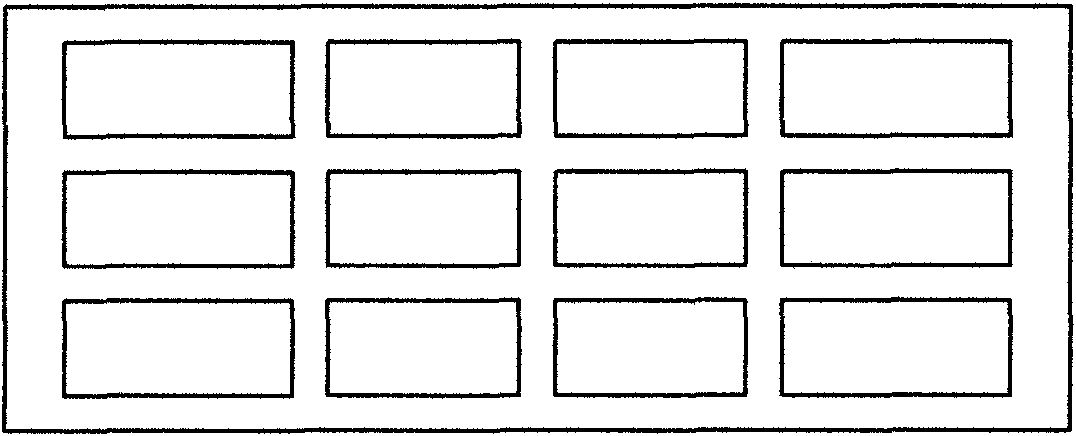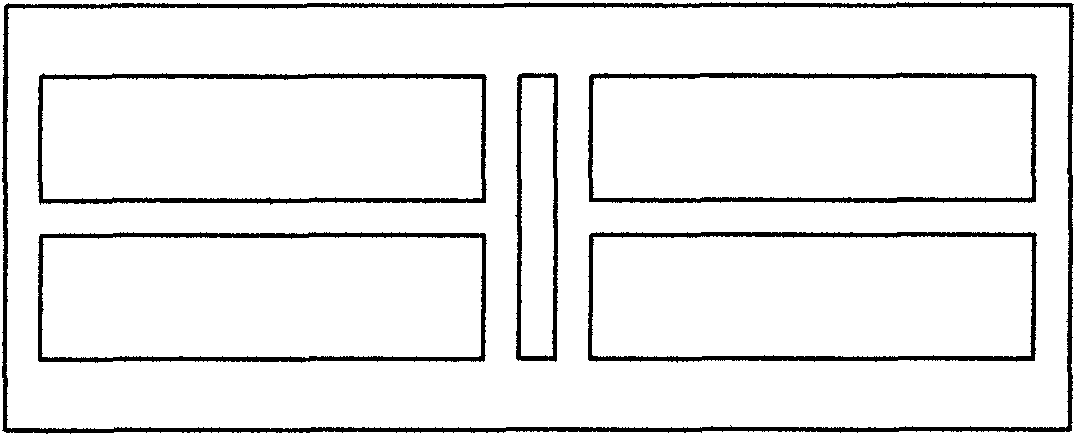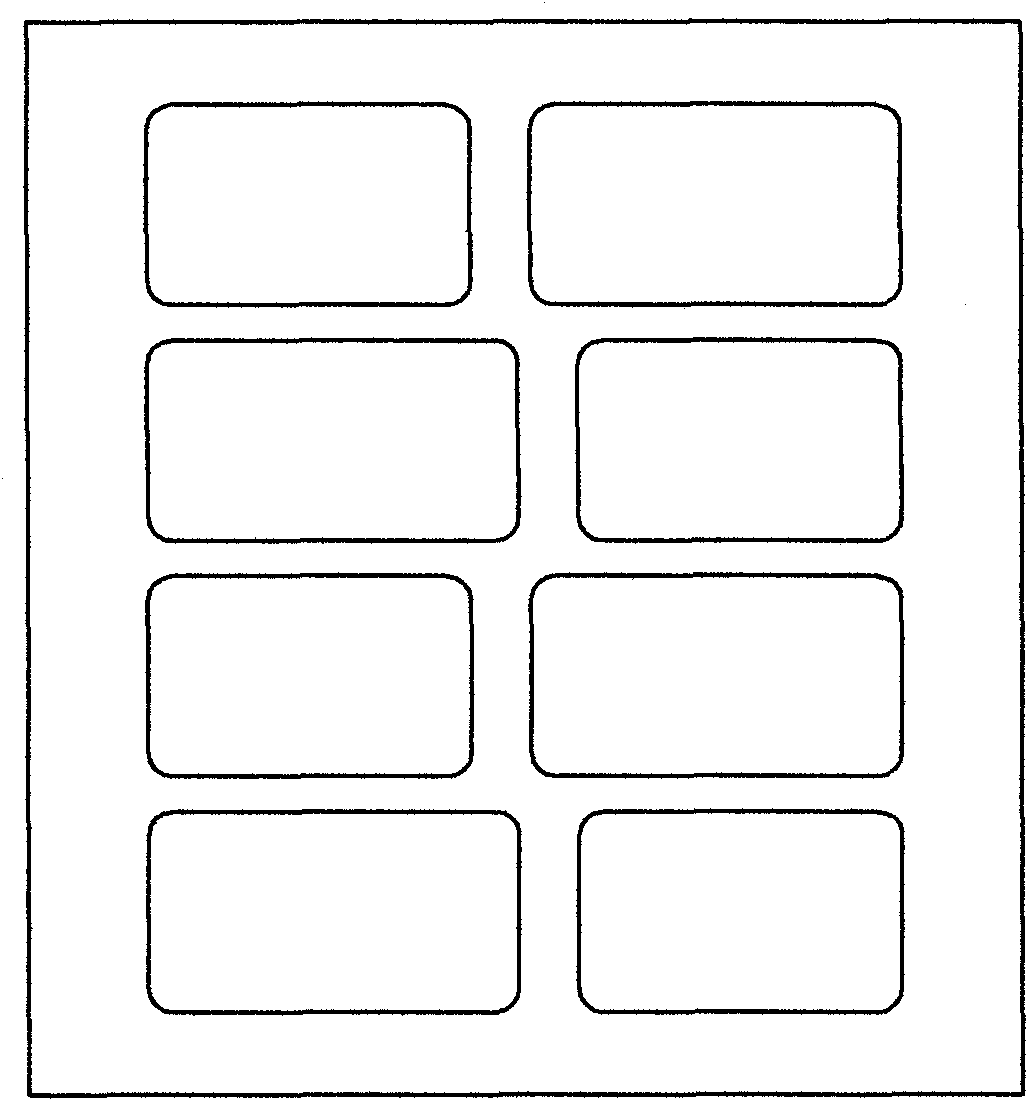Lightweight insulating brick and production process thereof
A kind of insulation brick, lightweight technology, applied in the field of building materials, can solve the problems of poor security, low strength, long construction period, etc., and achieve the effect of strong security, strong water resistance and good compactness
- Summary
- Abstract
- Description
- Claims
- Application Information
AI Technical Summary
Problems solved by technology
Method used
Image
Examples
Embodiment 1
[0014] The production process of the lightweight thermal insulation brick is as follows: 1. Weigh 8 to 15% of the cementitious material, 30 to 50% of the bone material, 25 to 55% of the light material, and 1% to 2% of the auxiliary agent by weight, Waterproof powder 3% to 4%; 2. Stirring: the early strength agent is first mixed with water, and then mixed with various ingredients through a mixer. And the hardness is not good, the over-wet material will stick to the mold, the product is fragile and difficult to demould; 3. Pressing: convey the ingredients into the brick making machine for pressing and forming; 4. Palletizing: the product has just been pressed and formed, and the strength is extremely poor. It is advisable to stack up to 4 boards to avoid unnecessary losses; 5. Maintenance: After the products are stacked, spray water for maintenance once the next day, that is, start stacking after 72 hours, and spray water for maintenance once a day. After the fifth day, it will n...
Embodiment 2
[0019] The production process of the light insulating brick is as follows: 1. Take by weight 10% of cement, 35% of crushed materials such as miscellaneous sand or slag, slag, coal gangue, perlite or its waste slag powder or waste foam crushed materials, Carbide slag, sawdust, coal ash powder and other light materials 50%, early strength agent 1%, waterproof powder 4%; 2. Stirring: early strength agent is first mixed with water, and then mixed with various ingredients through a mixer. It is advisable to be able to knead into a ball without wet hands. If the product is too dry, it will not be pressed into shape, and the hardness is not good. If the material is too wet, it will stick to the mold, and the product will be easily damaged and difficult to demould; Forming; 4. Palletizing: The product has just been pressed and formed, and its strength is extremely poor (lower than the palletizing of cement sandstone bricks). It is advisable to stack 3 to 4 boards to avoid unnecessary l...
Embodiment 3
[0024] The light material content in the brick body is more than 40%. It is an insulating brick, which is suitable for hot and cold areas. Thermal (board) bricks, the middle wall is only 9 to 12cm wide. The production process of the light insulating brick is as follows: 1. Take by weight 10% of cement, 50% of broken materials such as miscellaneous sand or slag, slag, coal gangue, perlite or its waste slag powder or waste foam broken materials, Calcium carbide slag, sawdust, coal ash powder 35%, early strength agent 1.5%, waterproof powder 3.5%; 2. Stirring: early strength agent is first mixed with water, and then mixed with various ingredients through a mixer, and the ingredients can be kneaded into a ball It is advisable not to wet your hands. If the product is too dry, it will not be formed by pressing, and the hardness is not good. If the material is too wet, it will stick to the mold, and the product will be easily damaged and difficult to demould; Palletizing: The produc...
PUM
| Property | Measurement | Unit |
|---|---|---|
| width | aaaaa | aaaaa |
Abstract
Description
Claims
Application Information
 Login to View More
Login to View More - R&D
- Intellectual Property
- Life Sciences
- Materials
- Tech Scout
- Unparalleled Data Quality
- Higher Quality Content
- 60% Fewer Hallucinations
Browse by: Latest US Patents, China's latest patents, Technical Efficacy Thesaurus, Application Domain, Technology Topic, Popular Technical Reports.
© 2025 PatSnap. All rights reserved.Legal|Privacy policy|Modern Slavery Act Transparency Statement|Sitemap|About US| Contact US: help@patsnap.com



